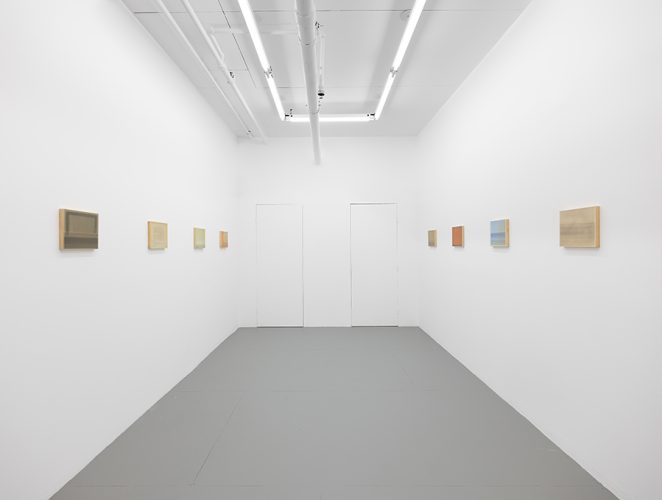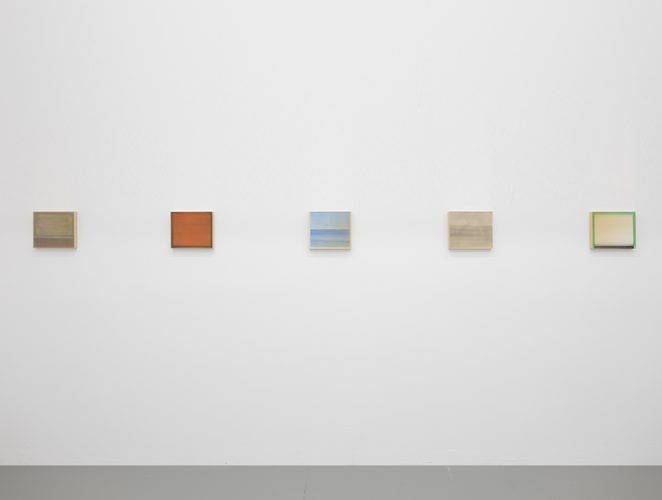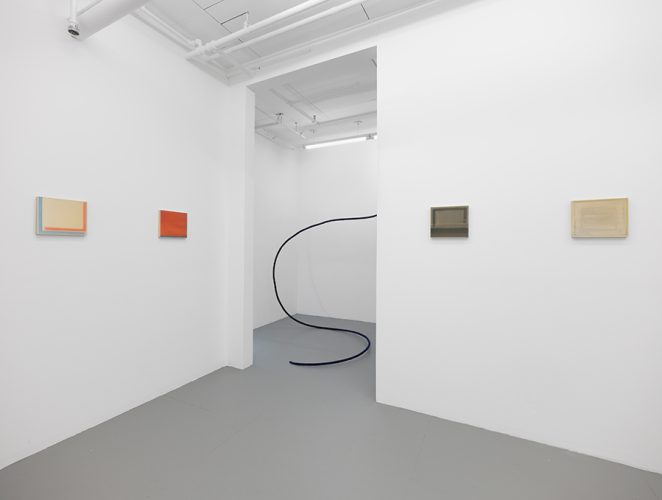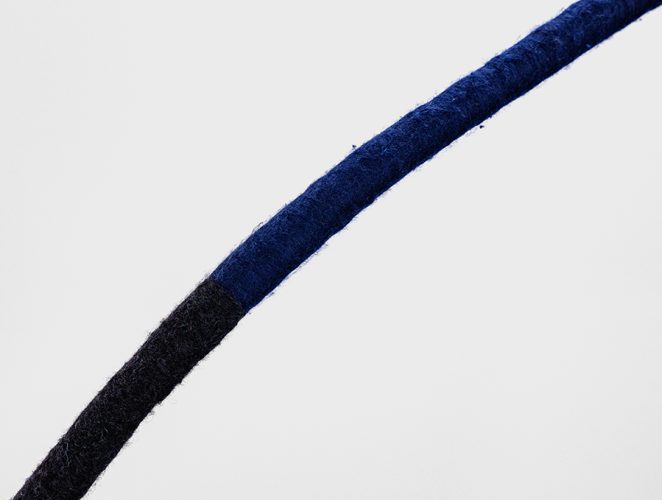





Mediating Forms: Manuela García
Known for her paintings, sculptures, and performances, Manuela García belongs to a new generation of Latin American and Latinx artists that abandon overtly political or violent images in response to gruesome histories. She grew up in Colombia in the 1980s and 1990s, when the country was impacted by numerous episodes of violence from the government and drug cartels. The artist recalls the sounds of car bomb blasts, people screaming, police and emergency sirens. In response to these dire realities, García opts for art that allows viewers to escape into another world and focus on constructing a reality that seeks harmony. She fuses geometric shapes with minimal color to erase borders, emphasizing totality. In Mediating Forms, García shares her visual language of abstraction, generating moments of meditation and contemplative beauty.
Mediating Forms is Manuela García’s first solo presentation in New York, and is composed of 11 paintings and one wire sculpture. With attention to spatial relations, transparency and tension, this exhibition shows the artist’s investigation of minimal linear structures, shapes, and color. Her encaustic paintings, made of beeswax, which symbolizes emptiness, highlight the material’s translucent capacities. With layers of subdued watercolors, the paintings are studies of light and reflection meant for pure observation although she hides the means of their construction. With a repetitive act of layering the wax and diffusing geometries and colors, García creates intimate works using fire, pigments, and heat to create unstable forms that dominate each surface. These minimalist compositions are serene configurations with blurred squares, rectangles, and thick lines. At times, the abstract paintings appear like luminous landscapes in which the horizon blends into a calming sea. Other paintings resemble spiritual portals or doors through which one enters mystic realms. Building on the legacies of Minimalist painting and geometric abstraction in Latin America, García’s interest is not in rigid, pattern-like arrangements that aim for universalism; instead her attention is on a formal study that alludes to organic forms and the fragility of construction.
In her sculptural practice, the artist engages with textiles and weaving techniques, crafting large- and small-scale interventions. These pieces are reminiscent of German-Venezuelan artist, Gego (Gertrud Goldschmidt) who was celebrated for her wire sculptures that presented her view of space. Suggesting negative and positive, García continues with an exploration of space using curved loops or spirals as the main motif. In these structures, the artist demonstrates an interest in a type of geometry beyond a perfect 90-degree angle. The sculptures, combining hard and soft materials, are made with steel and covered with wool, weaving the threads over the steel. García has been working with wool for several years, fascinated with its materiality and constructive qualities. She explores the possibilities of lines in space using black and red. Black points to graphite and the act of drawing, while red symbolizes earth, vitality, and death. García does not consider herself a textile artist, but takes inspiration from the way fabric is constructed or organized. The curved and arched aspects of García’s sculptures indicate the instability and transformative qualities of the materials.
María Elena Ortiz